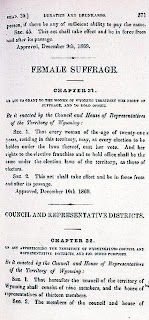A lesson in how dinner gets to the table
It’s August in Colorado: hot days, cool nights and crops ripening just beyond the city limits. Colorado sweet corn was calling my name. So yesterday, I took to the fields of Sakata Farms in Brighton. I arrived with a hunger for sweet corn. I left with a whole case. (What was I thinking?)
Now, I’m fanatic about freshness, and corn plucked from the stalk loses sweetness faster than a new car driven from a dealership lot loses the smell of money. The freshness clock was ticking. I had to act decisively…and I had to find the kitchen.
Day One: Dinner Time. With the freshness clock ticking, I steam-zapped half a dozen ears in the microwave, making sure everyone at the table had immediate access to butter and salt. And plenty of napkins. Because the corn was fresh - probably picked that very day - it was the best we’d ever tasted.
But what to do with the four dozen remaining ears? Listening from their waxed cardboard case, they heard me answer my own question: “I’ve got Joanna Sakata’s personal recipe for freezing corn.”
Seriously, using Joanna’s recipe provides a great lesson for kids about where our food comes from…and how much work goes into its preparation. (I can already see you moms nodding and smiling knowingly.) Take the kids to a farmers’ market. Let them talk to the farmers. Show them the fruits and veggies in their natural state, free of plastic wrap and Styrofoam. Bring home some corn! I suggest buying enough to eat the first night and two dozen more for the freezing process.
Day Two: 0700 Hours. With the freshness clock now clanging loudly, I was on the back deck shucking corn in the cool of the morning.
Following Joanna’s recipe closely, my junior assistant and I placed 16 cups of corn and four cups of water in a kettle on the stove. By this stage in the operation I could see that the scope of the clean-up phase would be a bit daunting.
So fresh was this corn that my junior assistant was sprayed with juice. I found her an apron.
Almost done! (Sounds easy, doesn’t it?)
Next, cool the kettle by setting it in a sink filled with ice and cold water. When cool, fill quart-size freezer bags or other containers with corn, placing a little liquid in each one. Two dozen ears of corn yield about five quart bags. They are now labeled and dated and chillin’ in the freezer even as I type these words.
The cleanup proved to be not only a daunting job but a lonely one, too. My junior assistant - and representatives of two other generations in the family - had already lost interest. I prefer to think that they had already mastered the lessons I hoped to teach. Sure, I'll go with that.
Lots of work, indeed. But that taste of summer will be welcome long into the fall.
P.S. Music always helps a task seem lighter, so here’s another suggestion. While working together in the kitchen, sing the following lyrics to the tune of “Sweet Home Alabama.”
Sweet corn Colorado
Where the skies are so blue
Sweet corn Colorado
Lord, you always make me drool
Where the skies are so blue
Sweet corn Colorado
Lord, you always make me drool
Colorado
Mmm Mmm Mmm
To share Bob Sakata’s inspiring story with your kids, check out my biography for young readers: Bob Sakata: American Farmer.












